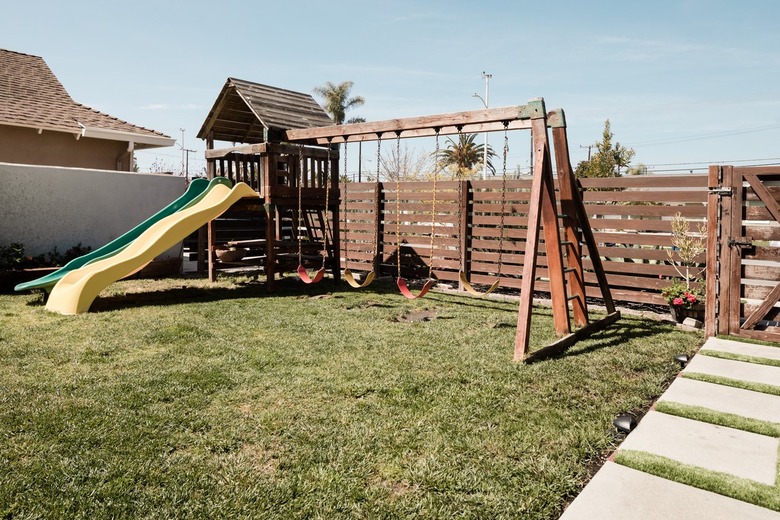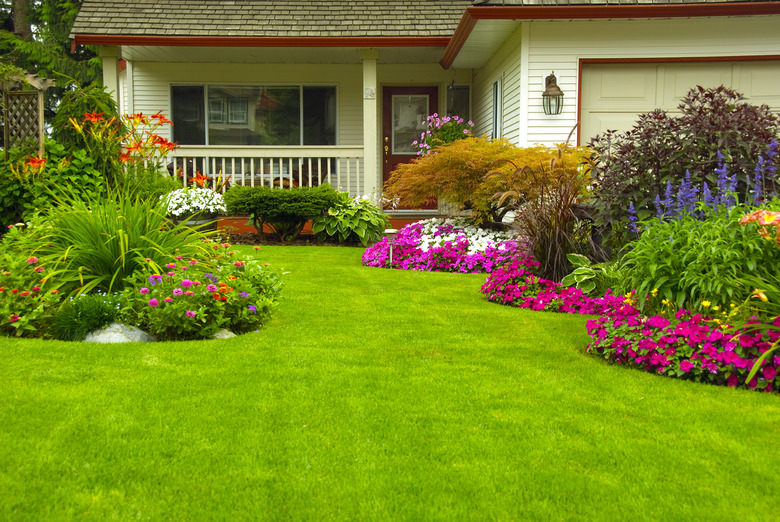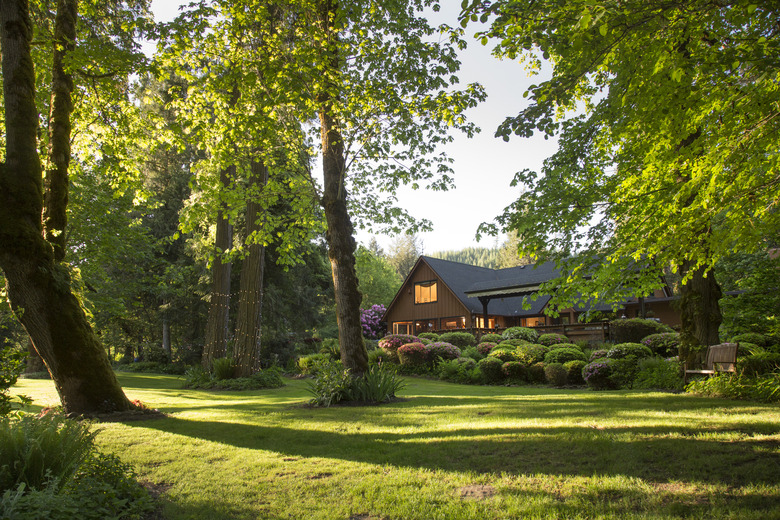How To Overseed A Lawn: A Beginner's DIY Guide
If your lawn appears thin or worn out rather than lush, overseed it to take care of the problem spots. Overseeding also helps ensure that a healthy-looking lawn stays that way season after season no matter the climate in which you live. Overseeding isn't necessarily a routine part of lawn care, but it can take an overlooked yard and easily turn it into the lawn of the month in your neighborhood.
Why You Should Overseed Your Lawn
Besides visibly thin grass, you may want to overseed if your lawn doesn't look as lush and green as it did in previous years. Over time, insects, weeds, pet waste, and periods of drought can take their toll on patches of your lawn. Just like plants in a garden, lawn grass goes through periods of growth, peak health, and aging to the point where it no longer looks vibrant and healthy despite receiving plenty of water or fertilizer. Overseeding ensures there's always plenty of new grass to take root and keep the lawn looking green and lush.
Once a lawn starts looking raggedy and worn out, overseeding helps keep weeds such as crabgrass at bay. The thinner the lawn, the greater the chance weeds pop up in the sparse areas. Overseeding with several grass varieties that do well in your climate also helps resist pests and diseases that may otherwise decimate the lawn grass. With several types of grass distributed throughout your yard, it's less likely that any one type of problem will affect every type of grass at the same time.
When to Overseed Your Lawn
The best time to overseed a lawn in Northern climates that drop well below freezing in winter is at the end of summer or early in fall, such as in September. You'll know when it's right to overseed once the summer heat drops off and the weather feels a bit more like autumn. During this time, the ground is soft, and it's still warm enough for seeds to germinate. If you miss the opportunity in fall, you can overseed a lawn in early spring, but fall is the better choice since there are fewer weeds competing with grass seeds doing their best to germinate.
In areas where freezing temperatures are a rarity at best, overseed a lawn in late spring or early summer when the soil is warm and grass growth is obvious. If you're overseeding simply to add a little color to an otherwise brown and drab winter lawn, do so in October or November, applying the seed of a cool-season grass that grows well in your region.
Preparing to Overseed Your Lawn
One of the best ways to prepare your lawn for overseeding is mowing it shorter than usual before applying seed. Bag the clippings rather than raking them or leaving them in the yard; this way, the seeds are better able to reach the soil surface. Rake the yard even after bagging the grass to pick up debris and dead plant matter. A garden rake also helps loosen the soil a bit and tugs at thatch, making it easier to remove.
If your yard has a lot of thatch or if the soil feels compacted and dense every time you dig a hole, then aeration (or, pulling out small plugs of soil in the lawn to help grass grow) is also a good idea to prepare it for overseeding. Thatch is the layer of thick grass stems and dead organic matter that develops on top of the soil. All lawns have some thatch, but too much thatch makes it harder for the new and existing grass to thrive.
Tip
Rent a core aerator from a local equipment rental shop to aerate your lawn easily. Run the aerator over your lawn as if you were using a lawn mower. Instead of trimming the grass, this unit pulls out plugs of soil and deposits them back on the yard. Aeration works best a few days after a rain or after the last time you watered the lawn.
How to Overseed Your Lawn
Choose a grass seed or seed blend that thrives in your hardiness zone and climate; these are often listed as cool-season or warm-season grasses. Cool-season varieties are for areas with cold winters, while warm-season grasses do well in hot summer weather but can't handle a cold winter. Also look for grass designed to resist drought, insects, and fungal diseases, for instance, to help ensure a healthy lawn year after year.
All-purpose blends, such as a sun and shade reseeding mix, are also good choices to use in the average yard that has some shaded areas and lots of sun. The label on the seed packaging generally tells you everything you need to know about the seed's benefits, where it grows best and how to care for it once it germinates.
Once you've chosen the seed, read the label to determine how much to use per square foot. If overseeding the entire yard or numerous relatively large areas, use a broadcast spreader to ensure even coverage with the ideal amount of seed per square foot. The seed package even indicates which setting to use on the spreader to ensure the best coverage.
A handheld spreader is another option that costs a lot less and takes up far less space in the garage or shed. This device works in much the same way as a broadcast spreader, only it may take a little practice to figure out the timing on using the controls and your walking pace. The setting suggestions are different for a hand spreader compared to a broadcast spreader, so make sure you check the seed bag for the proper handheld spreader settings.
If your yard is tiny, you may be able to overseed using your hand or a seed container that comes with a shaker top, shaking out the seed as recommended on the label as you walk through the yard. In any situation, it's best to overseed on a calm day so the seed lands where intended.
Care After Overseeding Your Lawn
Consult the seed label once again for the recommended watering schedule after overseeding. Water the area lightly once or twice a day for at least 10 minutes for the first week or so or until the seeds germinate. A heavier yet moderate watering every other day in the first week also helps. Water daily for about two more weeks until the seedlings are healthy and several inches tall. No watering is necessary after rainfall or if the ground still feels wet.
When watering, the goal is to moisten the soil to about 1/4 inch deep and not to flood the area or make it muddy. Too much water could promote plant diseases or wash the seed out of its intended location. Wait until the new grass is healthy-looking and at least several inches tall before you mow again. This isn't as crucial as when you are seeding completely bare spots in a yard since your existing lawn grass surrounds the new seedlings, but waiting until the seedlings are established helps ensure that most of the seed has germinated and turned into young blades of grass by this point rather than potentially blowing away when still in seed form.


